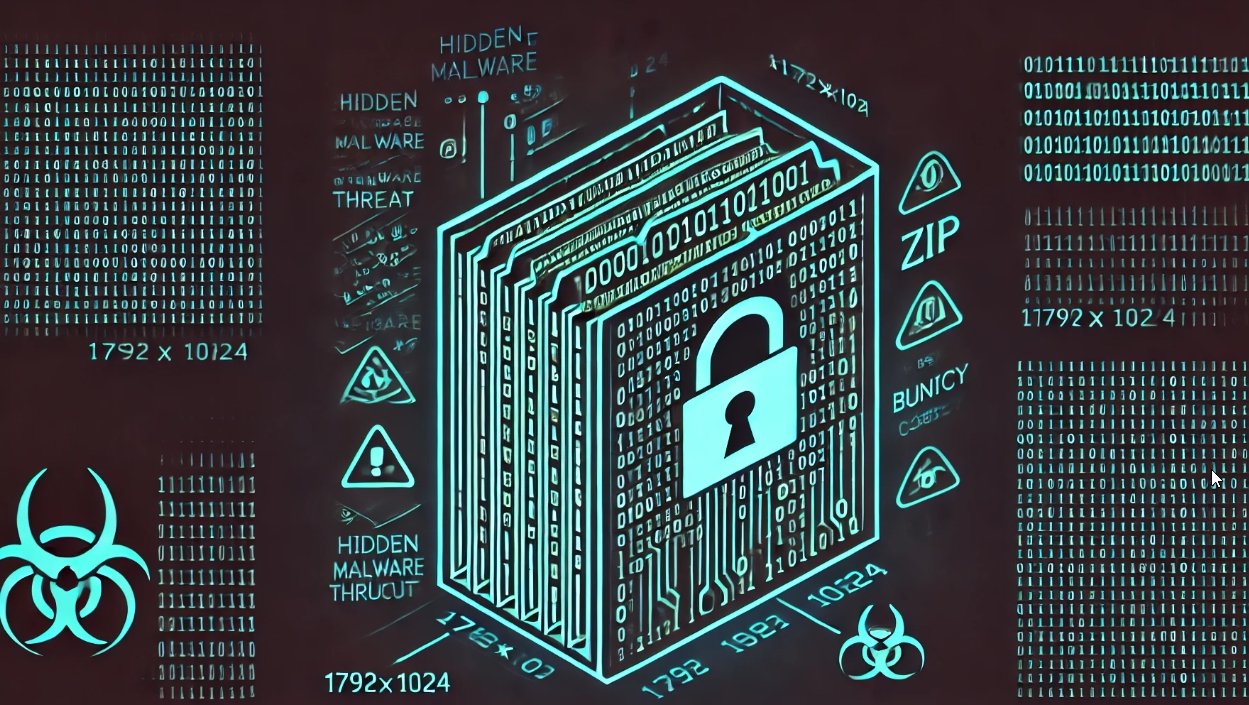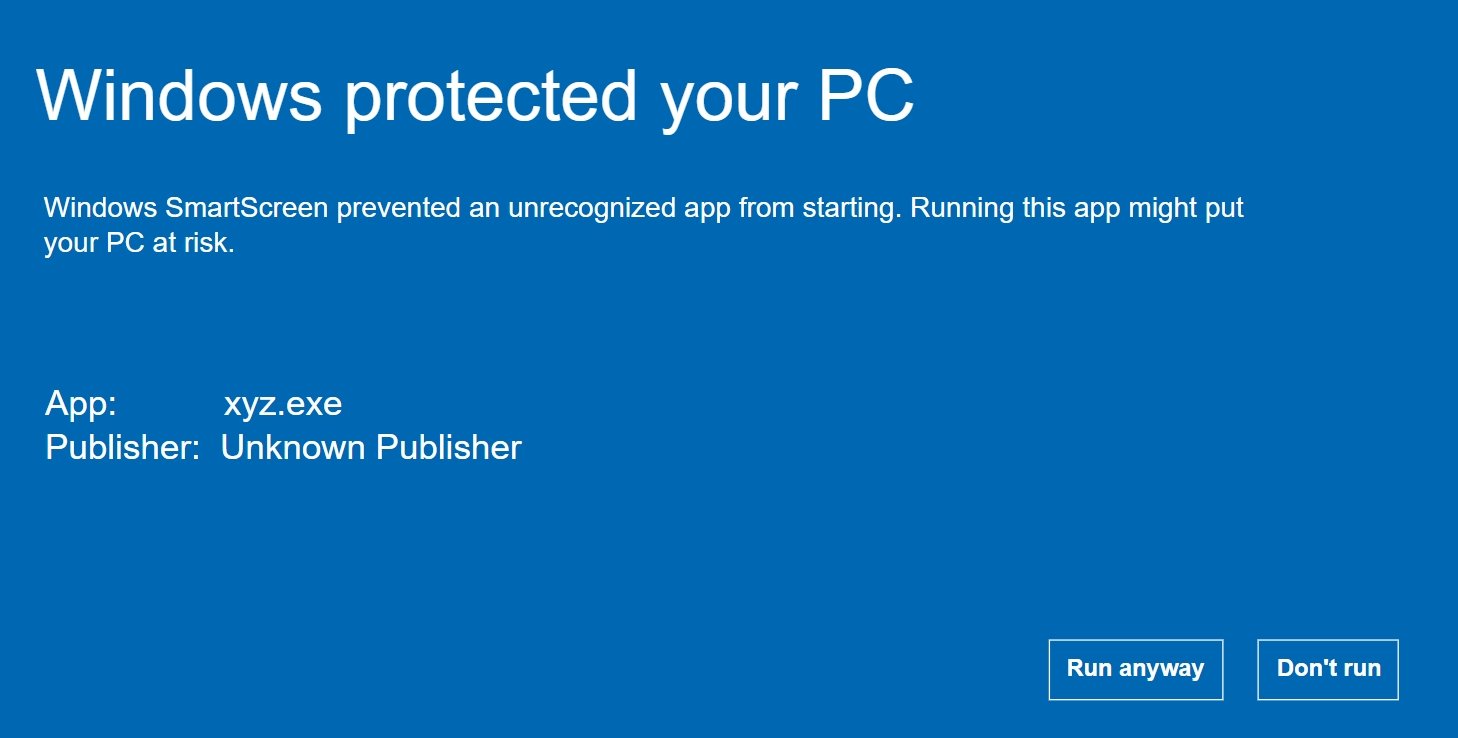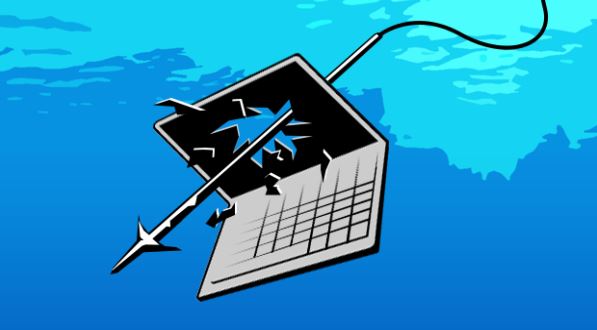Recently, our analyst Jérôme Segura captured an interesting payload in the wild. It turned out to be a new bot, that, at the moment of the analysis, hadn’t been described yet. According to strings found inside the code, the authors named it TrickBot (or “TrickLoader”). Many links indicate, that this bot is another product of the people previously involved in Dyreza. It seems to be rewritten from scratch – however, it contains many similar features and solutions to those we encountered analyzing Dyreza (read more).
Analyzed samples
- f26649fc31ede7594b18f8cd7cdbbc15 – initial sample, dropped by Rig EK
- 3814abbcd8c8a41665260e4b41af26d4 – unpacked: intermediate payload (loader)
- f24384228fb49f9271762253b0733123 – unpacked: final payload (Trick Bot) – 32bit <-main focus of this analysis
- 10d72baf2c79b29bad1038e09c6ed107 – 64-bit loader
- bd79db0f9f8263a215e527d6627baf2f – unpacked: final payload (Trick Bot) – 64bit
- 3814abbcd8c8a41665260e4b41af26d4 – unpacked: intermediate payload (loader)
TrickBot’s modules:
- 533b0bdae7f4c8dcd57556a45e1a62c8 – systeminfo32.dll
- c5a0a3dba3c3046e446bd940c20b6092 -systeminfo64.dll
- 90421f8531f963d81cf54245b72cde80 – injectDll32.dll
- c90f766020855047c3a8138842266c5a – the DLL injected in browsers (32bit)
- 0b521fd97402c02366184ec413e888cc – injectDll64.dll
- 5a7459fb0b49a8b28fae507730e2a924 – the DLL injected in browsers (64bit)
Additional payload:
- 47d9e7c464927052ca0d22af7ad61f5d – downloaded sample
- e80ac57a092ffcf2965613c8b3c537c0 – unpacked
Distribution
The payload was spread via a malvertising campaign, involving Rig Exploit Kit:
Behavioral analysis
After being deployed, Trick Bot copy itself into %APPDATA% and deletes the original sample. It doesn’t change the initial name of the executable (in the given example the analyzed sample was named “trick.exe”)

First, we can see it dropping two additional files: client_id and group_tag. They are generated locally and used to identify, appropriately: the individual bot and the campaign to which it belongs. Content of both files is not encrypted, it contains text in Unicode.
Example of the client_id – it consists of the name of the attacked machine, operating system version, and a randomly generated string:

Example of the group_tag:

Then, in the same location, we can see config.conf appearing. This file is downloaded from the C&C and stored in encrypted form.

After some time, we can see another folder being created in %APPDATA% – it is named Modules. The malware drops there additional modules downloaded from the C&C. They are also stored encrypted. In a particular session, TrickBot downloaded a module called injectDll32 and systeminfo32:

Particular module may also have a corresponding folder, where its configuration is stored. Pattern of the name is [module name]_configs.

When we observe the execution of the malware via monitoring tools, i.e. ProcessExplorer, we can find it deploying two instances of svchost:

The bot achieves persistence by adding itself as a task in Windows Task Scheduler. It doesn’t put any effort in hiding the task under a legitimate name, just calls it “Bot”.

If the process is killed, it is being automatically restarted by the Task Scheduler Engine:

Network communication
The Trick Bot connects to the several servers, i.e.:

First, it connects to a legitimate server myexternalip.com in order to fetch the IP visible from outside.
The interesting part is that it doesn’t try to disguise as a legitimate browser – instead, using it’s own User Agent: “BotLoader” or “TrickLoader”.
Most – but not all – of the communication with it’s main C&C is SSL encrypted. Below you can see an example of one of the commands sent to the C&C:

Looking at the url of POST request, we can notice the group_id and the client_id, that are the same as in the files. After that, the command id follows. This format was typical for Dyreza.
The bot downloads also an additional payload (in the particular session it was: 47d9e7c464927052ca0d22af7ad61f5d) without encrypting the traffic:

C&Cs are set up on hacked wireless routers, i. e. MikroTik. This way of setting up the infrastructure was previously also used by Dyreza.

Example of used HTTPs certificate – as we can see, used data is fully random, and not even trying to imitate legitimate-looking names:

Inside
Trick Bot is composed of several layers. As usually, the first layer is used for the protection – it carries the encrypted payload and tries to hide it from AV software.

Loader
The second layer is a main bot loader, that chooses whether to deploy 32-bit or 64-bit payload. New PE files are stored in resources – in encrypted form. However, authors didn’t try to hide the functionality of particular elements, and looking at the names of the resources, we can easily guess what their purpose is:

Selected modules are decrypted during execution.
At the beginning, the application fetches information about victim’s operating system, in order to choose the appropriate way to follow:

Depending on the environment, suitable payload is picked from resources, decrypted by a simple algorithm and validated:

Decrypting procedure is different than the one found in Dyreza – however, the general idea of organizing content (3 encrypted modules in resources) is analogical.
def decode(data):
decoded = bytearray()
key = 0x3039
i = 0
for i in range(0, len(data)):
dec_val = data[i] ^ (key % 0x100)
key *= 0x0AE529
key += 0x24D69
decoded.append(dec_val)
return decoded
See full decoding script: https://github.com/hasherezade/malware_analysis/blob/master/trickbot/trick_decoder.py
Then, the unpacked bot is mapped to the memory by a dedicated function and deployed.
The 32-bit bot maps the new module inside its own memory (self-injection):

and then redirects execution there:

Entry point of the new module (TrickBot core):

In case of 64-bit payload, first the additional executable – 64bit PE loader – is being unpacked and run, and then it loads the core, malicious bot.
In contrary to Dyreza – which main modules were DLLs – TrickBot uses EXEs.
The Trick Bot internals
The bot is written in C++. It comes with two resources with descriptive names: CONFIG – that stores encrypted configuration – and KEY – that stores Elliptic Curve key:

In general this malware is very verbose, meaningful names can be found on every stage.
The name “TrickBot” appears also in the name of global mutex (“Global\\TrickBot”), created by the application in order to ensure, that it is run only once:

At first execution, Trick Bot copy itself into a new location (in %APPDATA%) and deploy the new copy, giving as an argument path to the original one, that needs to be deleted:

Adding a task of running bot into the Task Scheduler:

Setting the triggering event:

We can find the date pointing to the beginning of 2016, that may confirm the observation, that the bot is new, written in this year.
Trick Bot’s Commands
TrickBot communicates with its C&C and send there several commands – in format similar to the one used by Dyreza. Below – list of format strings used by TrickBot commands:

compare with Dyreza’s commands’ format:

Trick Bot’s commands’ IDs are hardcoded in the format strings. However, all of them they are deployed from inside the same function, that gets the command ID as a parameter, i.e.:

After filling the appropriate format string and sending it to the C&C, bot checks the HTTP response code. If the returned code is different than: 200 (OK), 403 (Forbidden), 404 (Not found) – then it tries again.

Full list of implemented commands’ IDs:
0 1 5 10 14 23 25 63
Each command has the same prefix – that is a group id of the campaign and bot’s individual id (the same data that are stored in dropped files). Format:
/[group_id]/[client_id]/[command_id]/...
Sample url:
https://193.9.28.24/tmt2/TESTMACHINE_W617601.653EB63213B91453D28A68C80FCA3AC4/5/sinj/
Encryption
TrickBot uses alternatively two encryption algorithms: AES and ECC.

The downloaded modules and configuration are encrypted by AES in CBC mode. The AES key and initialization vector are derived from the data, by a custom, predefined algorithm. First, 32 bytes of input data is hashed, using SHA256. Then, the output of the hashing function is appended to the data buffer and hashed again. This step is repeated until the full size of data in buffer become 4096. So, the hashing operation repeats 128 times. Below you can see the responsible fragment of code:

First 32 byte long chunk of data is used as a initial value to derive AES key:

And bytes from 16 to 48 are used as a initial value to derive AES initialization vector:

Compare with the content of CONFIG (mind the fact that the first DWORD is a size, and is not included in the data):

Full decoding script you can find here: https://github.com/hasherezade/malware_analysis/blob/master/trickbot/trick_config_decoder.py
Decrypting hardcoded configuration using AES:

In case if particular input could not be decrypted via AES, the attempt is made to decrypt it via ECC:

Trick Bot’s configuration
Similarly to Dyreza, TrickBot uses configuration files, that are stored encrypted.
Trick Bot’s executable comes with a hardcoded configuration, that, during execution is substituted by it’s fresh version, downloaded from the C&C and saved in the file config.conf. Below you can see the decrypted content of the hardcoded one:
| <mcconf> | |
| <ver>1000002</ver> | |
| <gtag>tmt2</gtag> | |
| <servs> | |
| <srv>91.219.28.77:443</srv> | |
| <srv>193.9.28.24:443</srv> | |
| <srv>37.1.209.51:443</srv> | |
| <srv>138.201.44.28:443</srv> | |
| <srv>188.116.23.98:443</srv> | |
| <srv>104.250.138.194:443</srv> | |
| <srv>46.22.211.34:443</srv> | |
| <srv>68.179.234.69:443</srv> | |
| <srv>5.12.28.0:443</srv> | |
| <srv>36.37.176.6:443</srv> | |
| <srv>37.109.52.75:443</srv> | |
| <srv>27.208.131.97:443</srv> | |
| </servs> | |
| <autorun> | |
| <modulename=“systeminfo“ ctl=“GetSystemInfo“/> | |
| <modulename=“injectDll“/> | |
| </autorun> | |
| </mcconf> |
Compare it with a downloaded one – version number got incremented, and some C&Cs have changed:
| <mcconf> | |
| <ver>1000003</ver> | |
| <gtag>tt0002</gtag> | |
| <servs> | |
| <srv>91.219.28.77:443</srv> | |
| <srv>193.9.28.24:443</srv> | |
| <srv>37.1.209.51:443</srv> | |
| <srv>138.201.44.28:443</srv> | |
| <srv>188.116.23.98:443</srv> | |
| <srv>104.250.138.194:443</srv> | |
| <srv>46.22.211.34:443</srv> | |
| <srv>68.179.234.69:443</srv> | |
| <srv>5.12.28.0:443</srv> | |
| <srv>36.37.176.6:443</srv> | |
| <srv>37.109.52.75:443</srv> | |
| <srv>84.232.251.0:443</srv> | |
| </servs> | |
| <autorun> | |
| <module name=“systeminfo“ ctl=“GetSystemInfo“/> | |
| <module name=“injectDll“/> | |
| </autorun> | |
| </mcconf> |
Notice that names of the listed modules (systeminfo, injectDll) are corresponding to those, that we found in the folder Modules during the behavioral analysis. It is due to the fact, that this configuration gives instructions to the bot, and orders it to download particular elements.
Some of the requests result in downloading additional pieces of configuration. Example of the response, after being decrypted by the bot:
| <servconf> | |
| <expir>1480550400</expir> | |
| <plugins> | |
| <psrv>80.79.114.179:443</psrv> | |
| </plugins> | |
| </servconf> |
Modules
TrickBot is a persistent botnet agent – but its main power lies in the modules, that are DLLs dynamically fetched from the C&C. During the analyzed session, the bot downloaded two modules.
- getsysinfo – used for general system info gathering
- injectDll – the banker module, injecting DLLs in target browsers in order to steal credentials
List of the attacked browser is hardcoded in the injectDll32.dll:

It case of the Dyreza, this attack was performed directly from the main bot, rather than from the added DLL.
Details of the attacked target are given in an additional configuration file, stored in the folder: Modules\injectDll32_config. Below we can see it’s decrypted form revealing the attacked online-banking systems:
| <igroup> | |
| <dinj> | |
| <lm>*/onlineserv/CM*</lm> | |
| <hl>91.219.28.103/response.php</hl> | |
| <pri>100</pri> | |
| <sq>1</sq> | |
| </dinj> | |
| </igroup> | |
| <igroup> | |
| <dinj> | |
| <lm>*ibanking.stgeorge.com.au/ibank/loginPage.action*</lm> | |
| <hl>91.219.28.103/response.php</hl> | |
| <pri>100</pri> | |
| <sq>1</sq> | |
| </dinj> | |
| </igroup> | |
| <igroup> | |
| <dinj> | |
| <lm>*ib.nab.com.au/nabib/index.jsp*</lm> | |
| <hl>91.219.28.103/response.php</hl> | |
| <pri>100</pri> | |
| <sq>1</sq> | |
| </dinj> | |
| </igroup> | |
| <igroup> | |
| <dinj> | |
| <lm>*banking.westpac.com.au/wbc/banking/handler*</lm> | |
| <hl>91.219.28.103/response.php</hl> | |
| <pri>100</pri> | |
| <sq>1</sq> | |
| </dinj> | |
| </igroup> | |
| <igroup> | |
| <dinj> | |
| <lm>*anz.com/IBAU/BANKAWAYTRAN*</lm> | |
| <hl>91.219.28.103/response.php</hl> | |
| <pri>100</pri> | |
| <sq>1</sq> | |
| </dinj> | |
| <dinj> | |
| <lm>*anz.com/INETBANK/login.asp*</lm> | |
| <hl>91.219.28.103/response.php</hl> | |
| <pri>100</pri> | |
| <sq>1</sq> | |
| </dinj> | |
| </igroup> | |
| <igroup> | |
| <dinj> | |
| <lm>*cibconline.cibc.com/olbtxn/authentication/*.cibc*</lm> | |
| <hl>91.219.28.103/response.php</hl> | |
| <pri>100</pri> | |
| <sq>1</sq> | |
| </dinj> | |
| </igroup> |
The instances of svchost.exe, observed during the behavioral analysis, are used to deploy particular modules.
Below – the module injectDll (marked sinj) in memory of svchost:

and the module systeminfo (marked GetSystemInfo) in memory of the another instance of svchost:

Conclusion
Trick Bot have many similarities with Dyreza, that are visible at the code design level as well as the communication protocol level. However, comparing the code of both, shows, that it has been rewritten from scratch.
Source

Working as a cyber security solutions architect, Alisa focuses on application and network security. Before joining us she held a cyber security researcher positions within a variety of cyber security start-ups. She also experience in different industry domains like finance, healthcare and consumer products.












